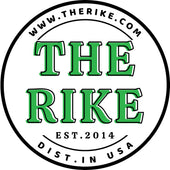Roots of Healing: A Journey through Medicinal Herbs and Traditional Crafts
In an era dominated by synthetic medicine and advanced technology, the age-old practice of herbal medicine holds significant relevance. Roots of Healing: A Journey through Medicinal Herbs and Traditional Crafts explores the rich tapestry of healing traditions across various cultures, focusing on the remarkable properties of medicinal plants and the craftsmanship that surrounds their use.
1. The Historical Context of Medicinal Herbs
Herbal medicine has existed for thousands of years, underpinning the health practices of ancient civilizations. In places like China, India, and Egypt, plants were revered not only for their healing properties but also for their spiritual significance. Traditional Chinese Medicine (TCM) utilizes herbs in conjunction with practices such as acupuncture, while Ayurveda, the traditional Indian system of medicine, emphasizes a holistic approach that balances the body, mind, and spirit.
2. Understanding Medicinal Herbs
Medicinal herbs are more than just plants; they are nature’s best-kept secrets, each with unique compounds that offer therapeutic benefits. Key categories include:
2.1. Adaptogens
Adaptogens are herbs that help the body adapt to stress and exert a normalizing effect on bodily processes. Examples include ashwagandha and rhodiola.
2.2. Anti-inflammatories
Herbs like turmeric and ginger boast powerful anti-inflammatory properties, making them popular choices for combating chronic pain and inflammation.
2.3. Sedatives and Relaxants
For those struggling with anxiety or insomnia, herbs such as chamomile and valerian root can provide a natural alternative to pharmaceuticals.
3. The Craft of Herbal Preparation
Creating herbal remedies is as much an art as it is a science. From tinctures and teas to salves and powders, the methods of preparation have been passed down through generations.
3.1. Tinctures
Tinctures are concentrated extracts made by soaking herbs in alcohol or vinegar. This method preserves the properties of the herbs and allows for easy consumption.
3.2. Herbal Teas
One of the simplest forms of herbal preparation, herbal teas are made by infusing dried or fresh herbs in hot water, releasing their benefits in a soothing drink.
4. The Role of Community and Traditions
Community knowledge and traditions play an essential role in the cultivation and use of medicinal herbs. Many cultures celebrate festivals that honor herbalists and traditional healers, highlighting the importance of passing down knowledge.
5. The Intersection of Tradition and Modern Science
The resurgence of interest in herbal medicine has prompted scientific research into the efficacy of many traditional remedies. Studies have begun to validate the claims made by herbalists and provide a bridge between ancient wisdom and modern medical practice.
6. Ethical Sourcing and Sustainability
With the growing popularity of herbal medicine, ethical concerns regarding sustainability and biodiversity arise. Conservation efforts are necessary to ensure that medicinal herbs are harvested responsibly, preventing the depletion of natural resources.
7. Conclusion
As we continue our journey through the realms of medicinal herbs and traditional crafts, we discover that the roots of healing run deep. While modern medicine has its place, the integration of traditional methods and specimens offers a holistic approach to health and well-being, emphasizing a connection to nature and the wisdom of our ancestors.





Leave a comment